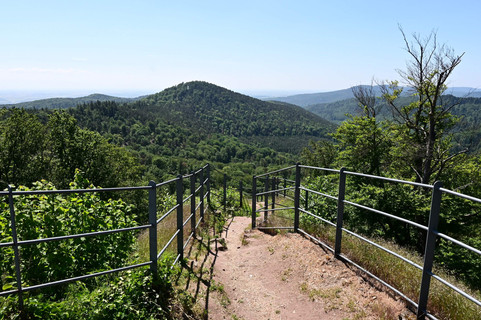Travel Photography Gear: Nikon Z50 Review
- Elena
- Jun 29, 2020
- 9 min read

It's taken me years (no kidding!) to find a good replacement for my trusty old Nikon D3. I ideally wanted something smaller and lighter, but with equally convincing image quality, plus an option to shoot great videos. Now that my travel photography gear collection has finally been expanded, read this Nikon Z50 review to find out why I believe it's the best camera for travel photography. Based on a few months of experience with the camera, testing different modes and pressing all the buttons, hopefully, I will be able to answer any questions you may have - sample images also included of course.
Disclaimer: As an Amazon affiliate, I earn from qualifying purchases
First of all, what sort of camera is the Nikon Z50?
The Z50 is a mirrorless camera, meaning it's compact in size and more lightweight than most DSLR brothers. For a travel camera particularly, the small size and weight is definitely something you will appreciate, having to carry it with you on tours and hikes. However much I love my Nikon D3 DSLR, after a while, it feels like I'm carrying a brick around...
At the same time, like the DSLR cameras, a mirrorless camera still comes with interchangeable lenses, so, if the kit lens is not enough, you can expand your collection and pick different ones depending on the nature of the shoot.
Nikon markets the Z50 as a 'camera for the rest of us'. I'm not sure what to make of the slogan really as it sounds kind of funny, but I guess the way you could interpret it is that it's suitable for both those with little photographic knowledge and those who are more advanced, just maybe not quite techy enough for the professional photographers. So, it's a great choice both if you are looking to upgrade from a phone or a compact camera or looking to downsize from a bulky DSLR. Depending on your skill set and desired level of involvement, you can use the fully automatic mode and let the camera make the decisions about the best settings, choose from a range of preset shooting modes (like sports, landscape, sunset etc.) or play around with all the settings in manual mode. I've done all three and got great results. The 'scene' modes are super handy when you don't want to dive into the individual settings.
The key camera stats:
(not going to get too technical here, just listing what I think is important from a user perspective and why it matters)
20.9MP APC-S sensor (not the biggest megapixel number I've seen, but unless you like to crop your photos a lot, I would actually prefer 20MP to 50MP, because image size! The more megapixels you have, the more space the photos will take up, both on the memory card and, afterwards, on your computer. With the amount of photos I transfer to my laptop after each trip, available disk space matters. For comparison, my Nikon D3 is 12 megapixel and I never felt that I needed more. It's more than enough for blog posts, social media as well as to print A4-size photo books.)
Body weight of 395 grams (nothing compared to 1.2 kilos for the Nikon D3! When I go hiking and carry it on my shoulder, I don't feel like I am lugging around a brick. I can hold it up in one hand with the arm stretched out to take a selfie without a problem.)
4K video at 30 fps and 1080 p HD video at 120 fps (personally, I am not bothered about 4K, HD is good enough for me, but, you know, it's there if you want to have the latest and greatest trends.)
Shoots photos at up to 11 fps (fast enough to get that perfect yawning cat shot - tested by me!)
Electronic viewfinder (while I don't always use it, it's an important option to have in case the conditions don't allow to effectively use the screen. Some manufacturers decided to lose this feature, which is a shame - Canon EOS M6 Mark II, a similar mirrorless camera, for example, only offers the viewfinder as an optional extra.)
3.2 inch rear screen is a touchscreen with live view and 'touch to focus' and 'touch to take a photo' features (I love being able to take a photo by touching - sometimes you just need that speedy reaction as opposed to starting to press buttons to move the focus point around. You literally just click on what you want sharp in the image and the camera focuses there and takes a photo.)
Rear screen can be tilted upwards and flipped to face the front (both of those I've been using a lot. The tilting comes super handy for shooting from awkward angles, for example, from the ground. If I didn't have the tilt option, I would have to lie down to be able to see what the camera captures - this way, I just crouch next to it and can see everything. The flipping makes selfies super easy.)
Face tracking/eye recognition (good for portraits, as it removes the need to move around the focus point manually.)
No in-body image stabilisation (but both kit lenses have image stabilisation.)
Wireless photo transfer to smartphone through the Nikon SnapBridge app (I find it a bit fiddly, but the cool thing is that you can choose whether you want to transfer the full-sized photo or a smaller version, so if storage space is an issue on your phone and you only want to post to Instagram, it's a nifty option to have)
Storage card type: SD/SDHC/SDXC; One card slot only. (Quite a common memory card format with lots of options available for all budgets. My Nikon D3 has two card slots, so it's possible to put .jpeg and .raw photos on different cards, but, to be honest, I haven't felt any inconvenience from only being able to use one memory card.)
One more thing I wanted to point out - compared to its direct competitors (Sony A6400, Fujifilm X-T30 and Canon EOS M6 Mark II), Nikon Z50 has the most protruding hand grip, which does wonders for comfort of holding. One of the issues of small mirrorless cameras for me is that they have shrunk down so much there's nothing to hold on to. That was a real downer when I was trying cameras out in the shops. I am happy to report that's not the case with the Z50 at all. It sits firmly in my hand and I don't worry about dropping it, so the ergonomics is definitely winning here.

So why did I buy the Nikon Z50 after years of indecision?
When looking for my next travel camera, I kept an open mind and researched and tried cameras from different brands and types (compact, bridge, mirrorless, DSLR). The competitors just weren't good enough in handling or image quality for me to forget about my Nikon lens collection, so in the end I resigned myself to having to carry a lot of weight around and was looking to buy another top of the range Nikon DSLR. But then I came across the Z50 and realised that in side-by-side image comparisons, in my opinion, it was coming out better than the flagship D4 and D850.
Ultimately, it was the image quality that did it for me, and, having now spent plenty of time taking photos with the Z50, I can confirm it hasn't disappointed. The images come out sharp and gorgeous.
Speaking of image quality, naturally, no camera review is complete without sample images and videos, so check them out. I used the 16-50mm kit lens throughout, so you can see what you get with the camera out of the box, without the need to invest in fancy professional lenses. Click on the photo to see a larger size.
Nikon Z50 sample images:
And here's a video filmed completely with the Nikon Z50:
What are the different kits and which one should I choose?
Naturally, you can get just the body of the camera, but there are several interesting bundles that you can buy that I recommend choosing from:
Nikon Z50 body + FTZ adapter
What on earth is an FTZ adapter you may ask and why would I need one? Well, the diameter of the lens mount on the Nikon Z-series cameras is different compared to the other Nikons (they call the other mount the F-mount). There aren't that many lenses on the market that were made for the Z-mount. The adapter allows you to be able to use the lenses made for the other Nikons and, as long as the lens has an integrated autofocus drive, the autofocus functionality will be fully supported.
If there is no drive in the lens, you will be able to focus manually with a focus box in the viewfinder turning green when the object behind it is sharp. It's not what you would want to use for photographing moving subjects, but is surprisingly easy to use for shooting landscapes and other stills.
This bundle is for you if you already have a Nikon DSLR with all the lenses you could need and that you definitely want to keep using. However, before you settle on this one, I would encourage you to check out bundle number 3 (body + FTZ adapter + 16-50mm lens) because the lens is pretty awesome and you will be saving weight and space not having to wear the adapter with it.
Nikon Z50 body + 16-50mm lens
In this kit, you get a great lens that, in my opinion, will cover most situations a travel photographer comes across. Sure, you wouldn't use it to take photos of birds far away in the sky, nor is it the right thing for something like whale and dolphin watching tours, where the subjects tend to be quite far away from the photographer, but mostly my travel shots consist of landscapes, architecture and some selfies, which this lens is ideal for.
All the reviews I read about this lens were glowing and, having tried it out myself now, I can confirm that they were not wrong - I love the quality of the photos! I've got other Nikon lenses, but to be honest, after playing around with a few for test purposes, I just left the kit lens on and that's what I use all the time.
The 16-50mm lens is tiny, which is ideal for something that you have to carry for a while. It also has built-in image stabilisation, to compensate for the lack of it in the camera body.
This bundle is for you if all you're after is a small-sized camera that takes great landscape to portrait photos and you're not really bothered about adding more lenses to your collection
Nikon Z50 body + FTZ adapter + 16-50mm lens
I've already described the adapter and the lens above, so I'll be short and sweet. This bundle is for you if a) you want to have a native kit lens, but also have a few F-mount lenses that you don't want to part with or b) you want to purchase several lenses and don't want to wait for Nikon to make more Z-mount ones (or you find the Z-mount lenses rather expensive, which they totally are)
Nikon Z50 body + 16-50mm lens + 50-250mm lens
If you like having a big zoom range, then this bundle might just be the thing for you. You get two kit lenses native to the camera, which together cover a very substantial zoom range. Both lenses also come with built-in image stabilisation. I haven't tested the 50-250mm lens myself, as I've decided that between the 16-50 lens and the other Nikon lenses I already own, I've got everything I need.
Sounds interesting? Then use the links below to see what sort of prices you would be looking at.
So I've been waxing lyrical about the Nikon Z50 for what feels like an eternity, but do I have any gripes? As a matter of fact I do have a few, no camera is perfect!
You have to flip a switch to change between photo and video mode as well as use different buttons to start a recording vs take a photo. My brain struggles to remember to do both. A bit disappointing thinking you're catching a cool moment on video to discover the switch was actually in photo mode...
A small gripe is that while the 'tap the screen to focus and take a photo' feature is great, I often end up taking random photos when trying to flip the screen out and back. You can disable that functionality if you find it annoying though.
If you want to use the selfie mode (i.e. flip the screen to face the same direction as the lens, so you can see yourself), you can't do that and use a tripod in the conventional way, because the screen flips down to where the tripod is and will be obstructed. Fortunately, there is an inexpensive solution for this problem - Smallrig made a special mounting plate that shifts the location of the tripod to the side.
And that is all. I am in love with my Nikon Z50 and if this post has convinced you to get one too, I hope you love it just as much as I do!

























The Nikon Z50 is a great choice for travel photography—compact, lightweight, and delivers fantastic image quality. If you're shooting videos on your trips and need to convert them for editing or sharing, I found that https://www.movavi.com/audio-converter/m4a-converter.html works well. It quickly converts video files to a variety of formats without losing quality, making it super handy for on-the-go editing.